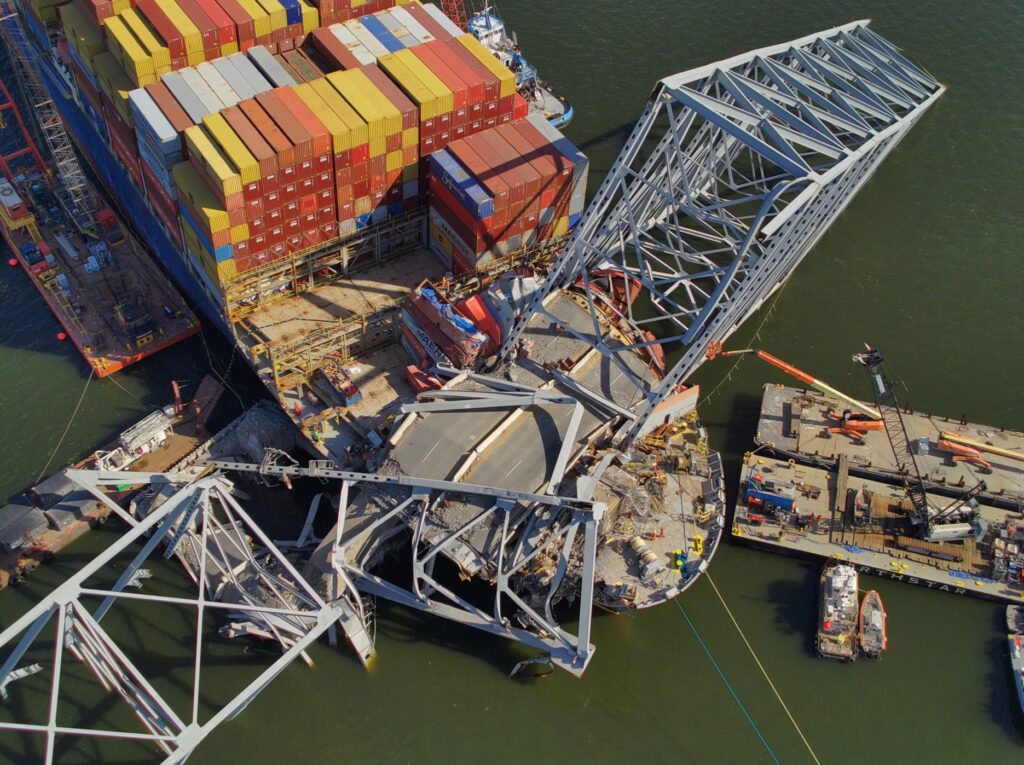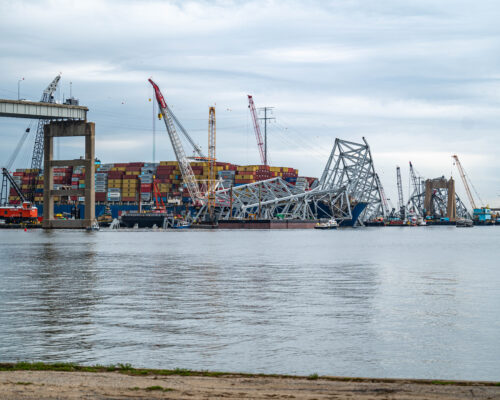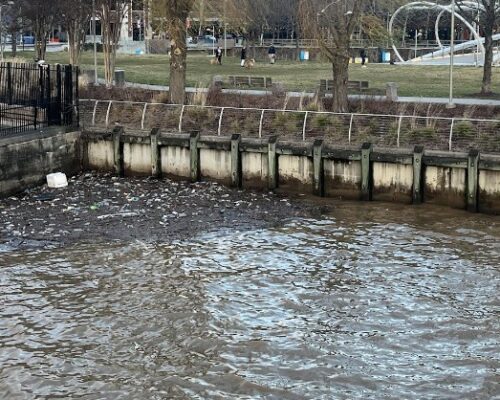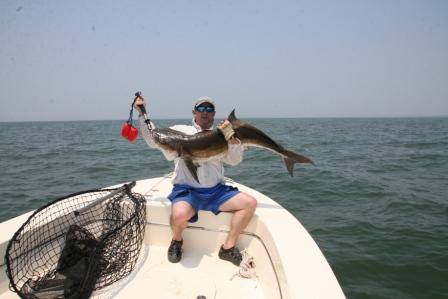The scene of the Key Bridge collapse is getting cleaned up, one mangled piece of steel at a time. Unified Command has brought in heavy machinery from all over the nation to raise and transport large pieces of bridge from the Port of Baltimore channel, which has been partially blocked since March 26.
Now, the salvage crews have turned their attention to one of the biggest challenges they’ve faced yet, known as “bridge section four”.
This large section of bridge is resting directly on top of the M/V Dali‘s bow. The container ship can’t be refloated and moved out of the way of the channel until bridge section four is gone.
Unified Command just announced it will use small explosives to make “precision cuts”, the first timey they’ll use this technique in the bridge removal.
“The small charges, a standard controlled demolition tool, will split the large section of truss at specific locations to create multiple, smaller sections, which allows salvors to use cranes and barges already on scene to remove these sections of the bridge and ultimately remove the M/V Dali from the channel,” Unified Command leaders say.
To prepare to move the bridge piece, cranes hoisted and removed 182 of the containers the Dali was carrying when it lost power and struck the bridge. Now, crews must carefully analyze conditions as they get ready to remove the massive piece of steel and roadway. Unified Command says, “Crushed containers, hull damage, and weight shifts are among the critical considerations crews must address during the bridge removal and refloating operation of the ship.”
To keep the salvage crews working on this dangerous operation safe, Unified Command is using special equipment to monitor the position and movement of the ship and the bridge wreckage resting on it.
“We’ve got a total of six of, what we call, inclinometers that measure tilt on key locations of the span and key locations of the ship so we can watch how it’s pitching and rolling with tide, and wind,” said Rob Ruthledge, a contractor working for the Key Bridge Unified Command. “We have a sensor measuring the relative position of the span on the ship so we can see, if for some reason, it starts to slip. We also have what are called string gauges, which can measure, in real-time, the stress, while they are performing operations.”
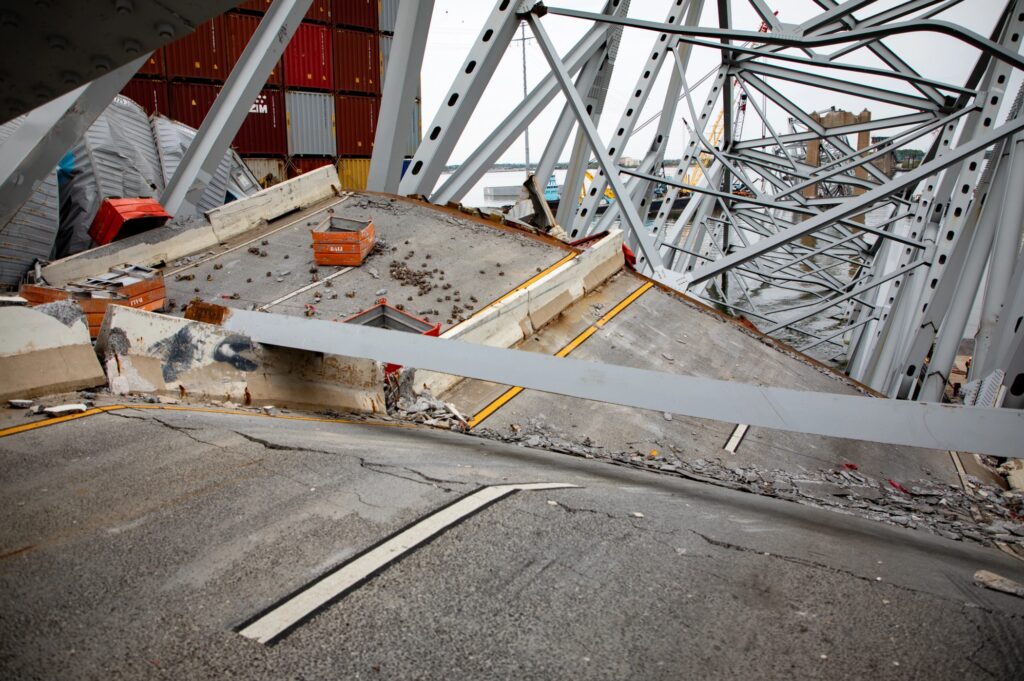
The fifth and sixth bridge workers have finally been recovered from the Patapsco River. They are identified as Miguel Angel Luna Gonzalez, 49, of Glen Burnie, Maryland, whose remains were found inside a red truck located by salvage teams. And José Mynor López, 37, who was recovered and identified as the final missing victim on Tuesday.
“We pray for José Mynor López, his family, and all those who love him. It is with solemn relief that he will be reunited with his loved ones,” said Maryland Governor Wes Moore.
“We remain dedicated to the ongoing recovery operations while knowing behind each person lost in this tragedy lies a loving family,” said Colonel Roland L. Butler, Jr., Superintendent of the Maryland Department of State Police.
Meanwhile, Unified Command is still working toward its goal of having the full 50-foot-draft Fort McHenry channel open by the end of May. By May 10 they plan to open a 45-foot-deep channel, allowing all but the largest ships serving the Port of Baltimore to pass through.
As they work, bridge response leaders remind boaters that the 2,000-yard maritime safety zone is still in effect and the entire site is a “No Drone Zone” established by the Federal Aviation Administration.

